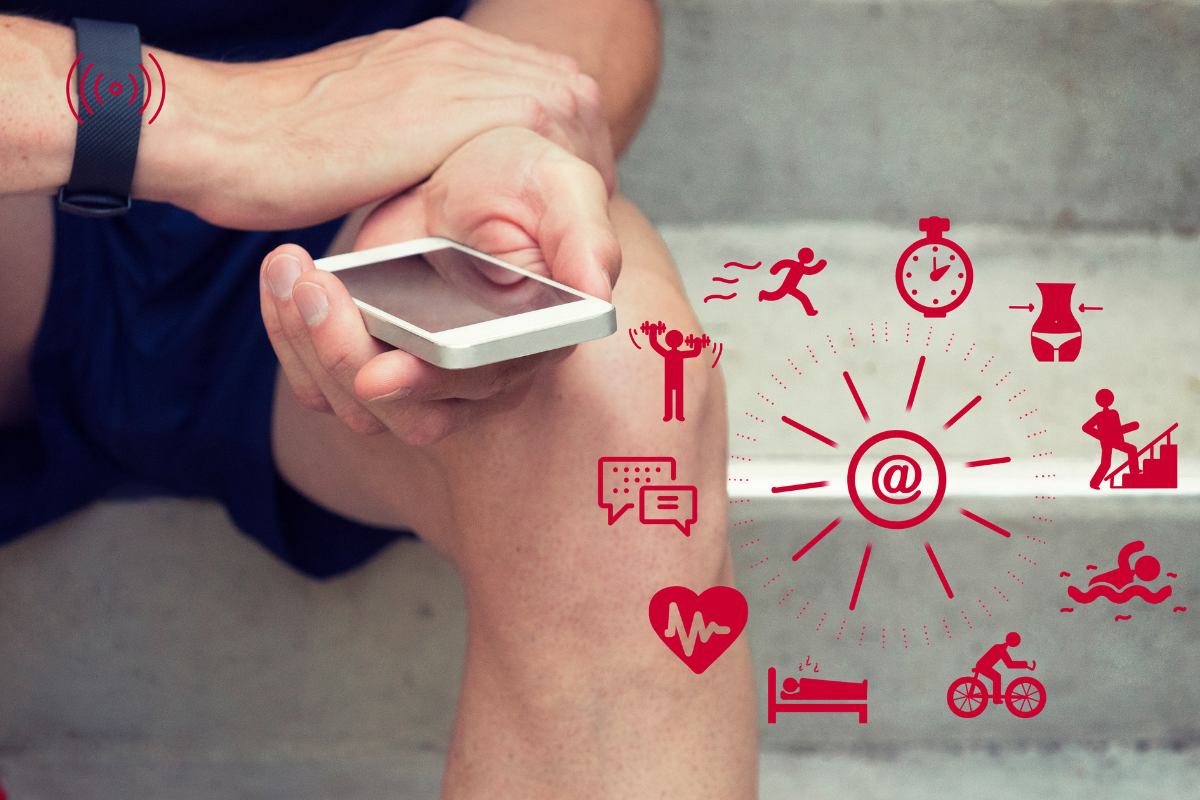
Activity trackers, smart watches, and heart rate monitors are becoming increasingly popular tools for individual health and wellness. In fact, wearable technology was named the number one fitness trend for 2022 by the American College of Sports Medicine. These fun gadgets can track all kinds of stats. But what does that information really mean? We’re going to take a closer look at some popular trackable features and how you can use that information to positively impact your wellness.
Steps
The concept of step-tracking has been around since the 1700s. However, the first activity tracker was not invented until 1965 by Dr. Yoshiro Hatano, a Japanese professor. This tracker was a pedometer called a Manpo-kei, which translates to “10,000 steps meter.” His research suggested that 10,000 steps per day along with a nutritious diet would help individuals maintain their health (Irwins). Steps are now one of the most monitored stats on activity trackers across the board. While it is common to hear that you should aim for 10,000 steps daily, a better focus is to intentionally move each day. Track your steps for a few days and find your average. Then, aim to increase that by about 1,000 at a time. If you typically walk 5,000 steps per day, try to hit 6,000 steps per day for your first goal. This will help you choose goals that are attainable, and you can create more of a habit with your overall activity. If you need more motivation, try a month-long step challenge with friends, family members, or coworkers.
Calories Burned
Calories burned is another popular statistic on wearable technology. While this can give a good insight into progress with activity and weight loss, it’s important to understand the variables that come with it. If your tracker has your personal information like height, weight, gender, and age, it can use your heart rate and activity to better estimate your calorie expenditure. However, even if your tracker has your personalized stats, calories burned can vary and shouldn’t be the only stat that is monitored. Instead, you can observe any unusual changes in your day-to-day calorie expenditure. If you notice certain days routinely have fewer calories burned, you might want to increase your activity on those days.
Activity
Close your rings. Hit your activity minutes. Earn zone minute. These are just a few different ways wearable trackers will monitor your activity. A tracker will gauge your heart rate and movement to help determine the minutes that you spend active throughout the day. The goal of monitoring activity minutes is to ensure you include planned exercise or intentional movement in your day. The Department of Health recommends at least 150 minutes of cardio exercise weekly. Monitoring active minutes will encourage you to include exercise that will raise your heart rate for an extended period of time.
Heart Rate
Monitoring your heart rate is a beneficial way to evaluate how hard you’re exercising. It can also show your resting heart rate. Heart rate is different for everyone, and you should talk with your doctor about determining a safe heart rate zone to work out in. Keeping an eye on your heart rate is also helpful for monitoring your health. Any unusual changes in your resting or active heart rate should be discussed with your doctor immediately.
Sleep
Many people like to use wearable technology to see how well they sleep. Activity trackers will monitor your movement and heart rate to help determine when you are asleep and estimate time spent in various stages of sleep (Live Science). Just like calories burned, this is an estimate. Everyone is different, and the tracker might not show a completely accurate picture of your sleep cycle. However, you can still use this information to help improve your quality of sleep. If you notice patterns with less sleep or restless sleep, reflect on things like your usual bedtime, stress levels, and bedtime routine, and see how you can alter those things to help improve your sleep. The tracker can be a helpful tool, but remember to check in with yourself and how your sleep habits are impacting how rested you feel.
Stress
Activity trackers use heart rate and heart rate variability to help estimate stress levels. Heart rate variability is the change in the interval between heartbeats. Devices notice this and often warn you of your stress levels or encourage you to pause and take a deep breath. Sometimes heart rate variability can occur due to excitement. Regardless, it’s a good reminder to check in and see if you need to refocus. Consider a deep breathing technique like 4-7-8. Inhale and count to four, hold your breath and count to seven, then slowly exhale and count to eight. Repeat this process for several rounds. Practicing deep breathing is a good way to slow the heart rate during a stressful moment.
Wearable technology can be a great addition to your health and wellness efforts. When you’re deciding on a tracker, think about what types of stats you want to monitor and what is most important to you. Trackers have so many different bells and whistles these days. It’s important to find one that can be personalized to your needs and interests. While a tracker is a beneficial tool, it should never replace sound advice from medical professionals. If you ever notice anything unusual about your heart rate, blood pressure, sleep, or other tracked stats, you should consult your doctor right away.
Always consult with your physician before starting a new exercise program.
Written by BWS Lead Health Coach- Kelly Schlather, BS, ASCM – CEP
Continue reading November 2022 Newsletter: Gut-Lung Axis
